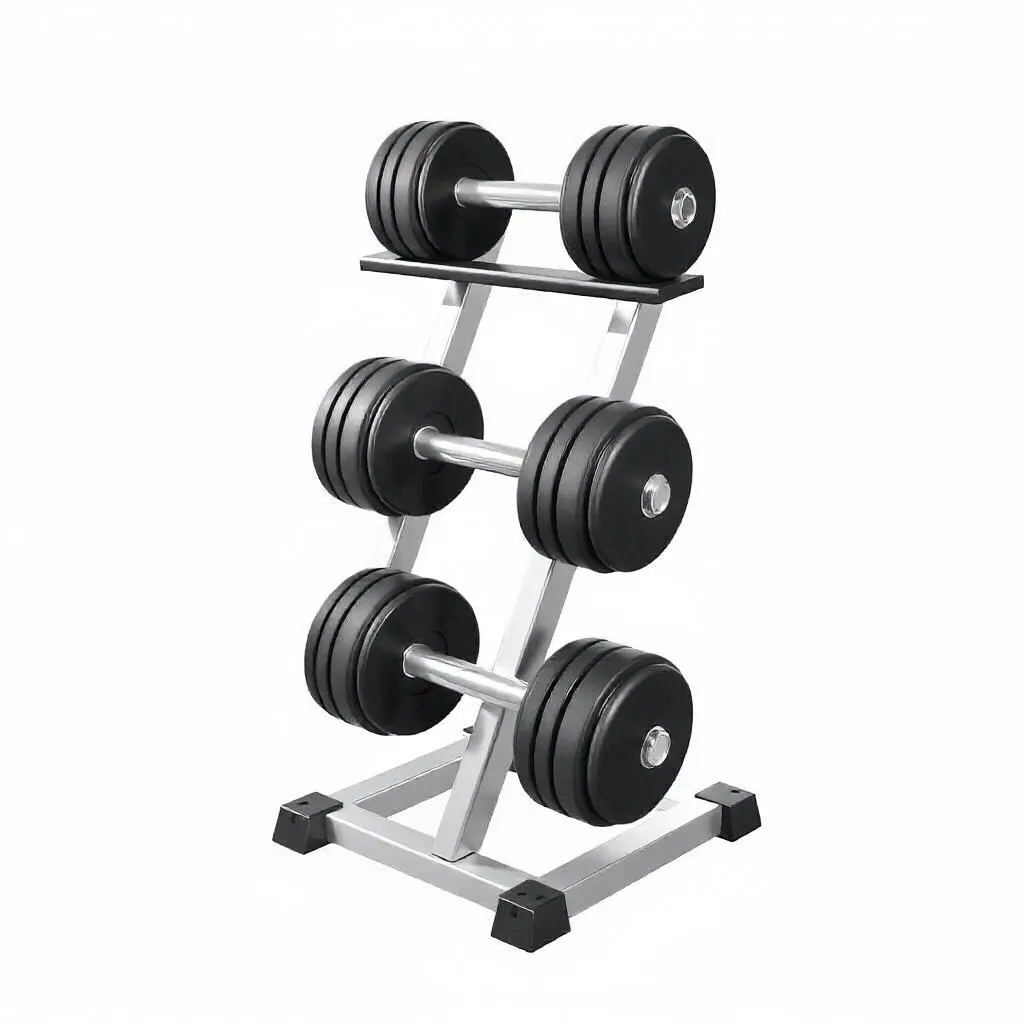In the world of fitness equipment, efficiency and safety are key. Dumbbell stands are indispensable there. They help create organized and effective workout spaces. A dumbbell stand is a specially designed storage rack crafted to neatly hold and organize dumbbells of various sizes and weights. Its main job is to provide a spot for each dumbbell. This makes them easy to access during workouts. It also prevents clutter and hazards on the gym floor.
Maintaining a well-organized fitness environment is more than just convenient. It is very important. Fitness enthusiasts and professionals recognize the pivotal role of organization. It enhances both the efficiency and safety of workouts. The equipment is neatly arranged and easy to reach. Exercisers can move between exercises without problems. This lets them make the best use of their time and effort.
The benefits of using dumbbell stands extend far beyond mere tidiness. They encompass a spectrum of advantages that contribute to an enriched fitness experience. First, dumbbell stands promote safety. They reduce the risk of accidents. These accidents are caused by tripping over misplaced equipment. Or, by struggling to find the right dumbbells in a cluttered space. Also, organized equipment fosters a good workout atmosphere. It lets people focus on their training goals without distractions.
Moreover, the utilization of dumbbell stands facilitates efficient workout routines. These stands provide a central place for dumbbells. They make it easier to select and put away weights, cutting the need to search for scattered equipment on the gym floor. This easy access encourages smooth transitions between exercises. It optimizes workout flow and boosts productivity.
Using dumbbell stands helps dumbbells last longer. Stands give them good support and stop them from getting damaged quickly. This means your dumbbells will keep working well for a long time without breaking down.
Simply put, adding dumbbell stands to gyms shows we care about staying organized, safe, and getting the most out of workouts. As we learn more about dumbbell stands, we see how they help us organize, stay safe, and get better results from our exercises.
Types of Dumbbell Stands
Dumbbell stands come in different styles to fit what people like and need. Knowing about each type helps you pick the best one. Let’s look at three main types: fixed stands, adjustable stands, and vertical racks.
A. Fixed Dumbbell Stands
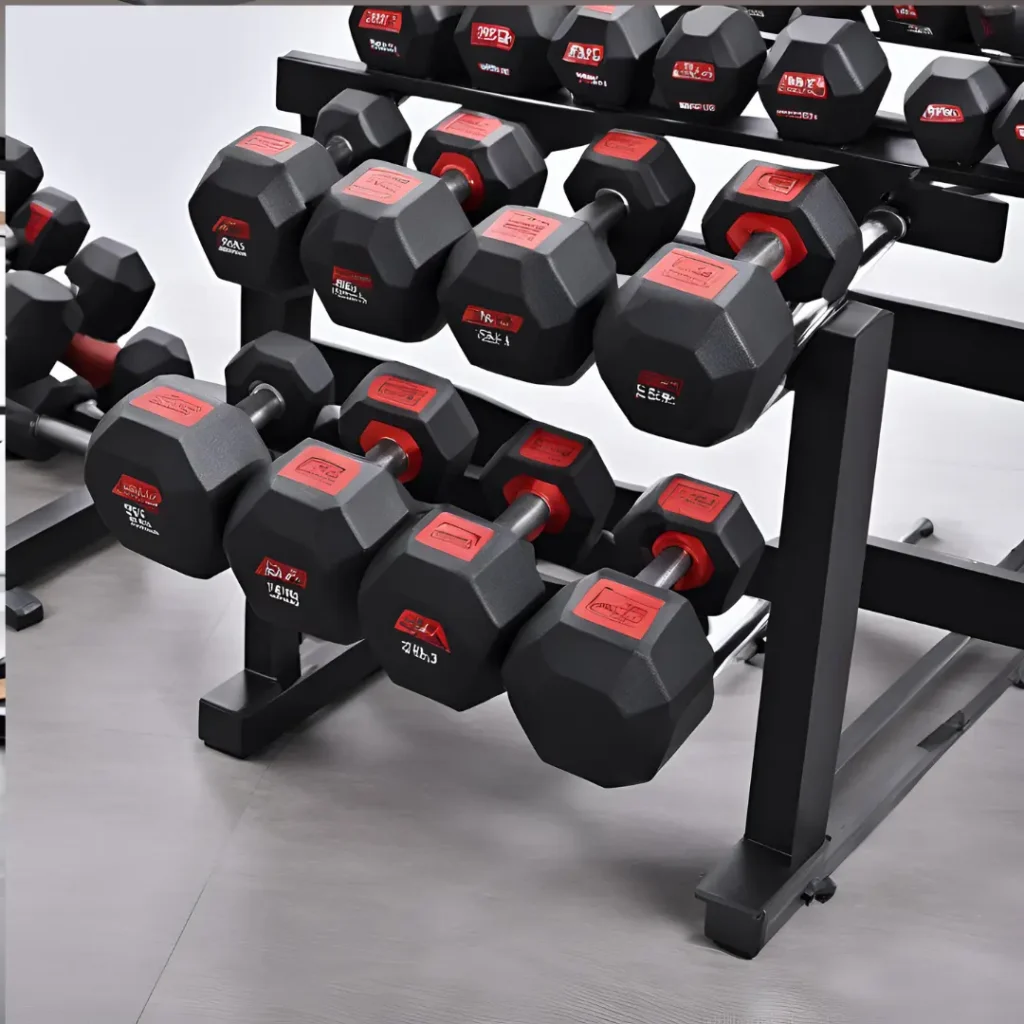
1. Description and Features: Fixed dumbbell stands are sturdy, stationary racks designed to hold a specific set of dumbbells. They are typically made from durable materials like steel or heavy-duty plastic. These stands have many tiers or shelves to hold dumbbells of different weights. They often come in a compact, space-efficient design, making them suitable for home gyms or facilities with limited space.
2. Pros and Cons:
– Pros:
– Stability: Fixed dumbbell stands offer excellent stability and support, ensuring that dumbbells remain securely in place during workouts.
– Ease of Use: With a designated spot for each dumbbell, users can easily locate and access the desired weight without searching or reorganizing.
– Durability: Constructed from robust materials, fixed dumbbell stands boast long-lasting durability, withstanding the rigors of frequent use.
– Cons:
– Limited Flexibility: As they are designed to hold a specific set of dumbbells, fixed stands may lack the flexibility to accommodate additional or adjustable weights.
– Space Constraints: While compact, fixed dumbbell stands occupy a fixed amount of space, which may be a limitation in smaller workout areas or crowded gyms.
B. Adjustable Dumbbell Stands
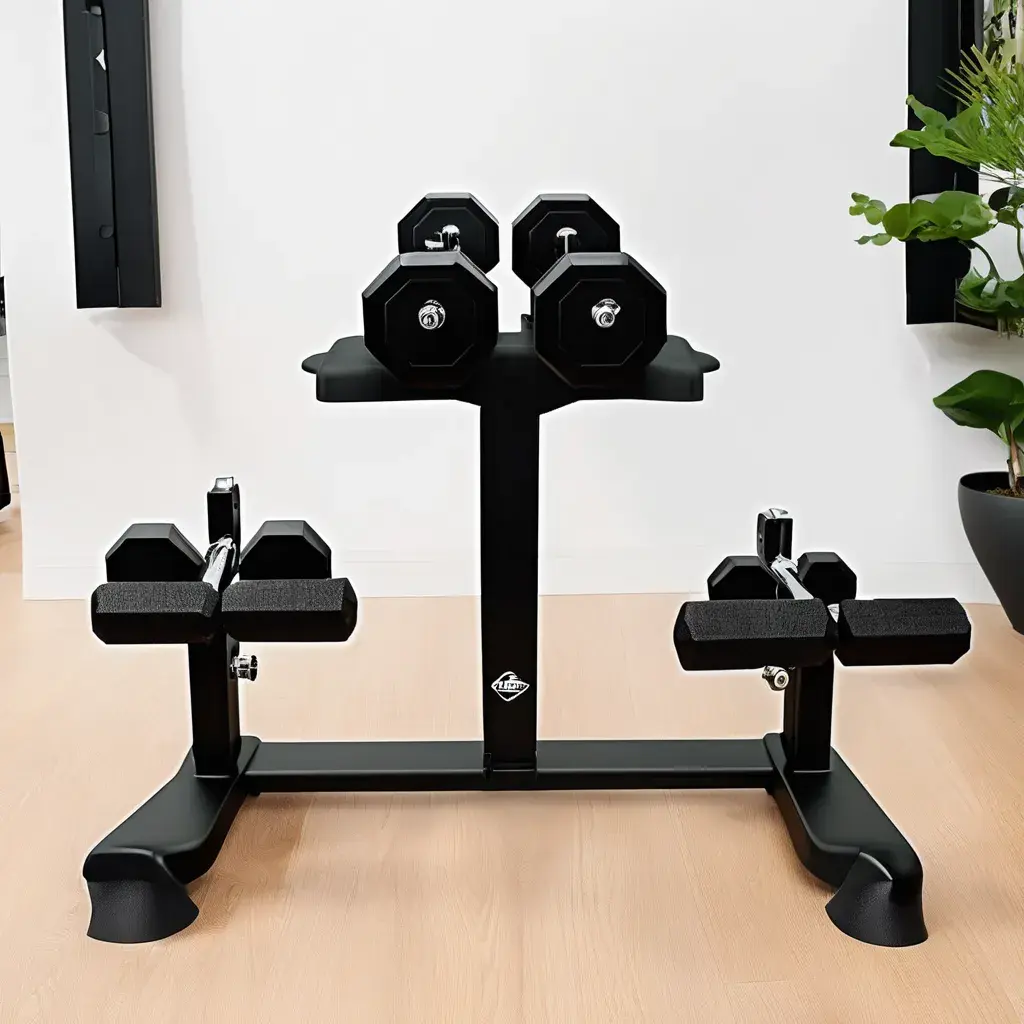
1. Description and Features: Adjustable dumbbell stands offer versatility by allowing users to customize the configuration according to their desired weight selection. These stands usually have adjustable shelves or trays. They can fit many dumbbell sizes and shapes. Users can easily adjust the spacing between shelves to accommodate different weight increments.
2. Pros and Cons:
– Pros:
– Versatility: Adjustable dumbbell stands provide the flexibility to accommodate a wide range of dumbbell sizes and weights, making them suitable for users with diverse fitness goals.
– Space Efficiency: By consolidating multiple dumbbell sets into a single stand, adjustable stands help conserve space, ideal for compact workout areas.
– Convenience: Users can easily adjust the stand to accommodate their preferred weight increments, eliminating the need for multiple fixed stands.
– Cons:
– Stability Concerns: Depending on the design and construction, some adjustable stands may be less stable compared to fixed stands, especially when supporting heavier weights.
– Complexity: The adjustable features of these stands may introduce additional complexity in terms of assembly and operation, requiring careful adjustment and maintenance.
C. Vertical Dumbbell Racks
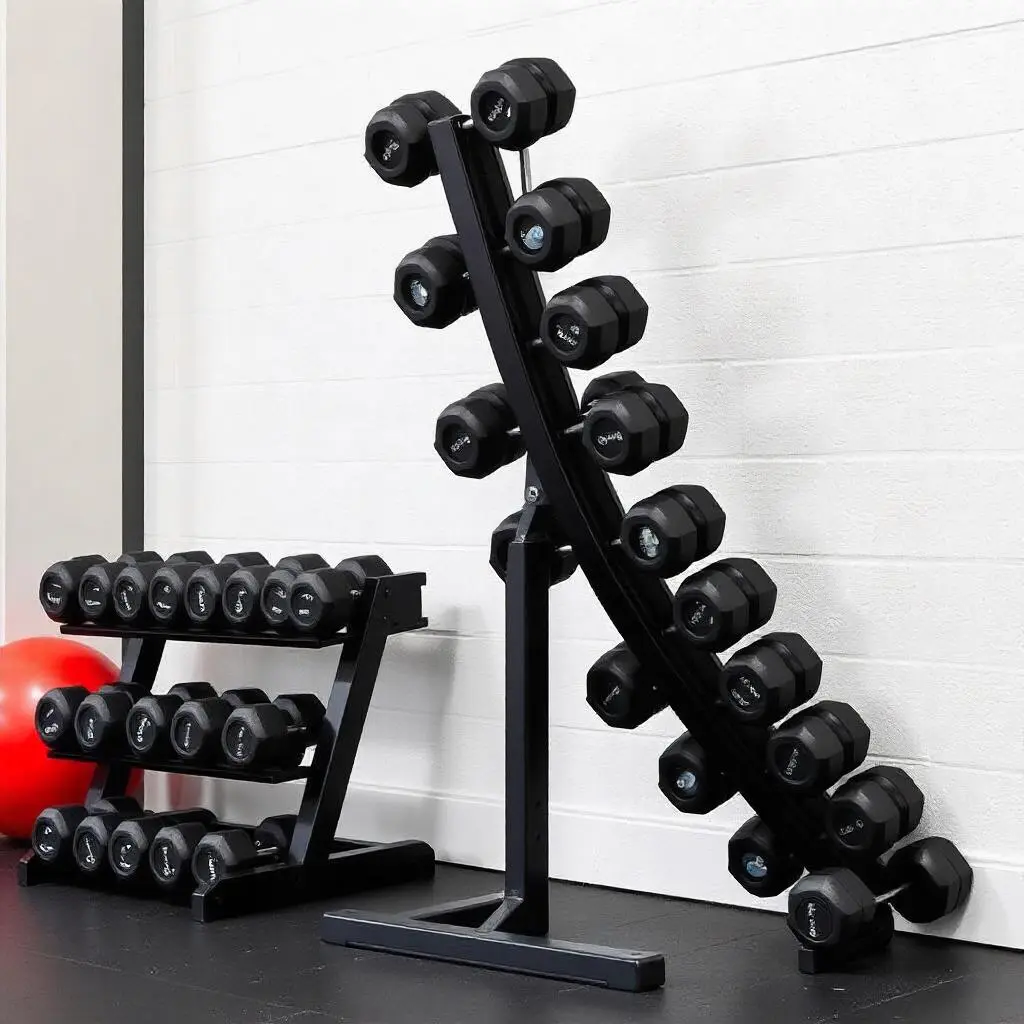
1. Description and Features: Vertical dumbbell racks hold your dumbbells upright in a tall, narrow setup. They have shelves or slots for different weight dumbbells, with the heavy ones at the bottom for balance. These racks save space by standing up instead of spreading out, which is great for small areas.
2. Pros and Cons:
– Pros:
– Space Optimization: Vertical dumbbell racks utilize vertical space efficiently, allowing users to store a large number of dumbbells in a relatively small footprint.
– Accessibility: With dumbbells arranged in a vertical stack, users can easily view and access the desired weight without having to search or rearrange other dumbbells.
– Stability: The compact design and low center of gravity of vertical racks contribute to enhanced stability, minimizing the risk of tipping or toppling.
– Cons:
– Weight Distribution: Placing heavier dumbbells at the bottom of the rack may require more effort to lift and replace them, especially for users with limited strength or mobility.
– Limited Capacity: While space-efficient, vertical racks may have a limited capacity compared to larger fixed or adjustable stands, potentially restricting the number of dumbbells that can be stored.
It’s important to know about the different types of dumbbell stands so you can choose the best one for your workout area. You might care more about it staying steady or being versatile. Or, you want to save space. The right type of stand can make your workout area better and easier to use.
Factors To Consider When Choosing A Dumbbell Stand
When selecting a dumbbell stand, several key factors should be taken into account to ensure that it meets your specific needs and preferences. Consider these factors. They include space limits, durability, and extra features. They will help you make an informed choice.
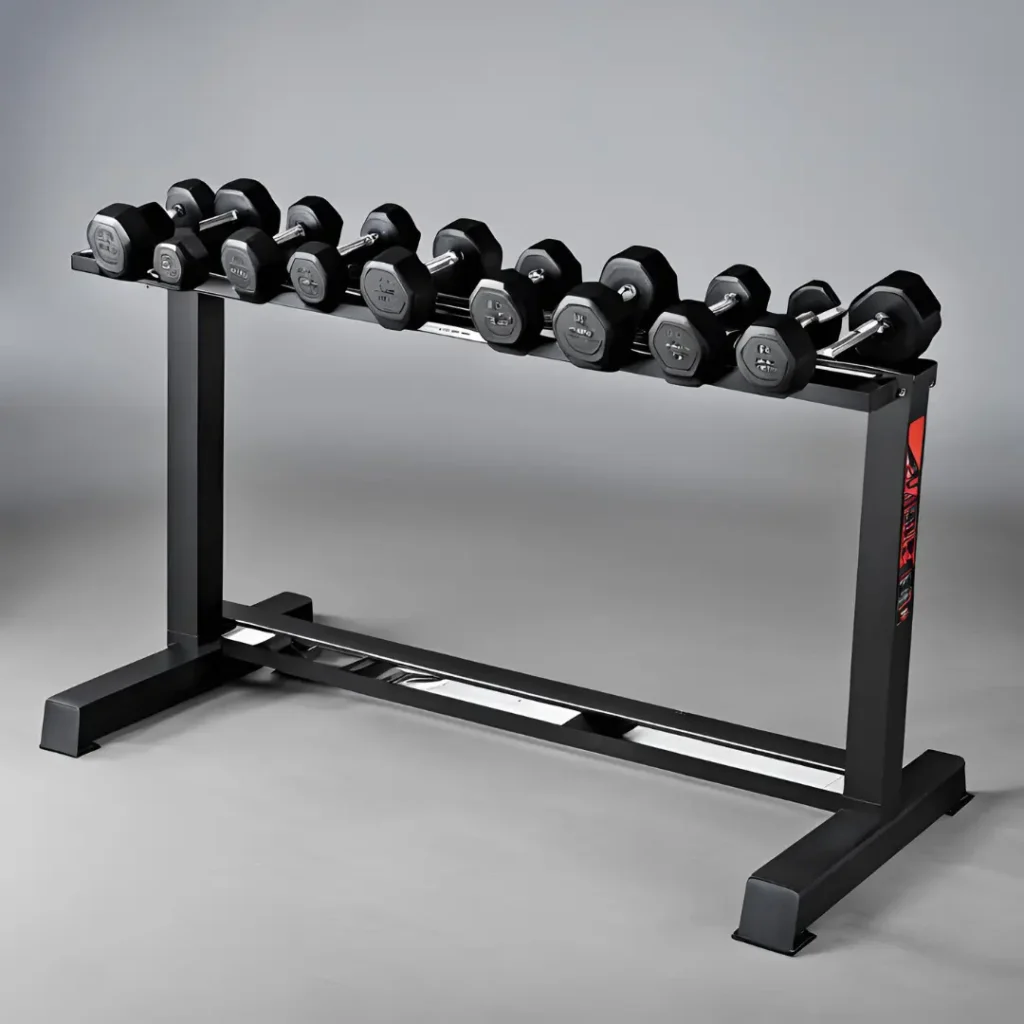
A. Space Availability
Space availability is a key consideration when choosing a dumbbell stand. This is especially true for home gyms or compact workout areas. Measure the available space where the stand will be placed to ensure it fits without obstructing movement or causing clutter. Consider the size of the stand. This includes its width, depth, and height. Use this to see if it fits your workout space.
B. Weight Capacity
The weight capacity of the dumbbell stand determines its ability to safely support the dumbbells it holds. Make sure the stand can hold all your dumbbells, including if you have more than one set. Get one that’s strong and can handle the weight without breaking or wobbling.
C. Material and Durability
The stuff the dumbbell stand is made from and how tough it is are really important for how long it lasts and how well it works. Get a stand made from strong materials like steel, aluminum, or tough plastic. Think about things like how well it resists rust and dents, and how solid it feels, so it can handle being used a lot without breaking.
D. Price Range
Decide how much money you can spend on a dumbbell stand because prices change a lot based on things like the brand, size, and what it can do. Think about how much you want to spend based on what you need and how good you want it to be. Check prices from different brands and types to find one that gives you the best quality and features for your money.
E. Additional Features
Think about what extra things the dumbbell stand can do to make it easier to use. Some stands have wheels or handles so you can move them around easily. Others have shelves or hooks to hold things like towels, water bottles, or bands. Decide what features you need based on what you like and what you want to use the stand for.
When picking a dumbbell stand, think about how much space you have. Also, consider how heavy your weights are, what it’s made of, its cost, and its extras. Choosing the right stand means thinking about what you need now and what will keep you happy and using it for a long time.
Benefits of Using Dumbbell Stands
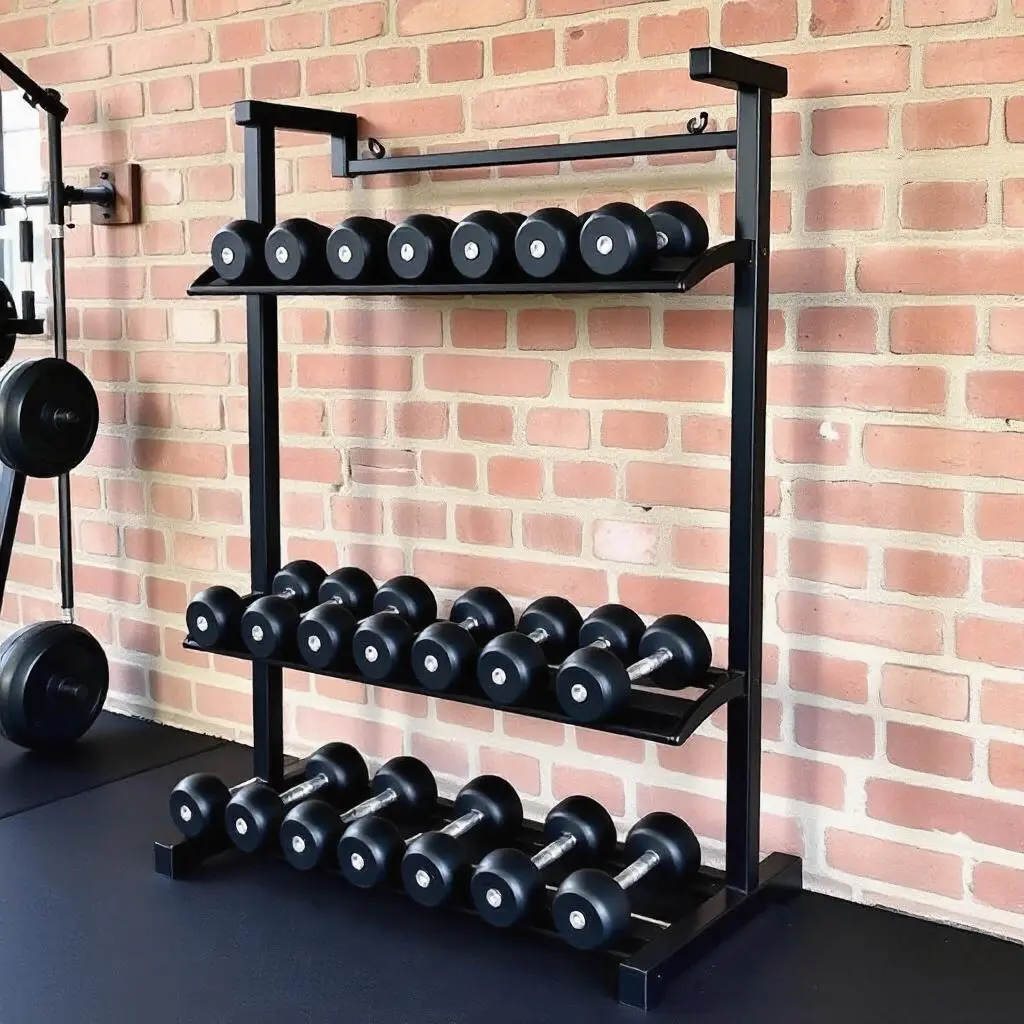
Dumbbell stands have lots of good things about them that make your workout area better. They help you stay organized and safe, save space, and make your gear last longer. They do more than just hold your dumbbells—they make your whole workout setup better. Here are some key benefits:
A. Organization and Safety
Dumbbell stands are really important for keeping your workout area neat and safe. They help you organize your dumbbells so you don’t trip over them or waste time looking for the right weight. Stands make sure each dumbbell has its own spot, so they’re easy to find and use during your workout.
B. Space Optimization
One of the primary benefits of using dumbbell stands is their ability to maximize space utilization in any workout area. Dumbbell stands tidy up your space. They keep all your weights together neatly. This means you have more room to move during your workout. This makes exercising easier and more comfortable, whether you’re at home or in a gym.
C. Prolonged Equipment Lifespan
Storing your dumbbells properly and taking care of them is really important for keeping them in good shape. Dumbbell stands give them the support they need and protect them from getting damaged. By keeping your dumbbells off the ground and away from anything that could harm them, stands help them last longer and keep working well.
D. Improved Workout Efficiency
Dumbbell stands help you work out better by keeping your dumbbells organized and easy to grab. When everything is in its place, you can switch between exercises smoothly and keep going without stopping. This makes your workouts more focused and productive, so you get better results from your fitness routine.
In short, dumbbell stands help you stay organized and safe while also saving space and making your gear last longer. Getting good stands makes your workout area better and helps you reach your fitness goals more easily.
How to Use Dumbbell Stands Safely
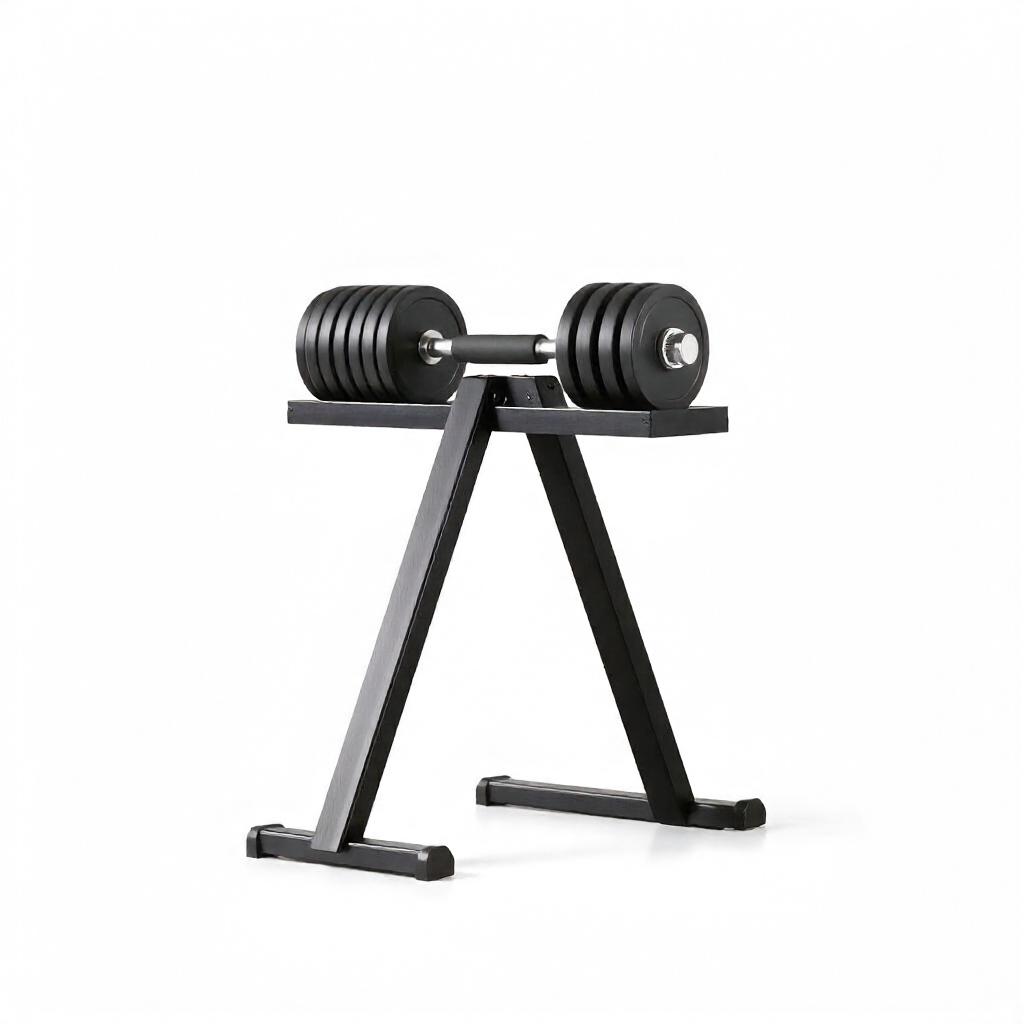
Using dumbbell stands safely is essential to prevent accidents, injuries, and damage to equipment. By following proper guidelines for placement, weight distribution, and maintenance, you can ensure a safe and effective workout experience. Here are some key safety tips:
A. Proper Placement and Stability
1. Secure Flooring: Place the dumbbell stand on a flat, stable surface with non-slip flooring to prevent it from shifting or sliding during use.
2. Even Weight Distribution: Ensure that the weight of the dumbbells is evenly distributed across the stand to maintain stability and prevent tipping.
3. Clear Surroundings: Keep the area around the dumbbell stand free from obstacles or clutter to minimize the risk of tripping or knocking over equipment.
4. Secure Positioning: Position the dumbbell stand against a wall or in a corner for added stability, especially if it is a vertical rack or has multiple tiers.
B. Weight Distribution and Balance
1. Proper Loading: Load the dumbbell stand with weights in a balanced manner, distributing heavier dumbbells evenly across the shelves or tiers.
2. Avoid Overloading: Do not exceed the weight capacity specified for the dumbbell stand to prevent structural damage or collapse.
3. Secure Placement: Ensure that each dumbbell is securely placed on the stand, with the handles resting securely on the rack to prevent them from rolling or slipping off.
C. Maintenance and Cleaning Tips
1. Regular Inspection: Periodically inspect the dumbbell stand for signs of wear, damage, or instability, such as loose screws, bent shelves, or rust.
2. Cleaning Routine: Clean the dumbbell stand regularly to remove dust, sweat, and debris that may accumulate on the surfaces. Use a mild detergent or disinfectant and a soft cloth to wipe down the stand.
3. Lubrication: Lubricate any moving parts or hinges of the dumbbell stand as needed to ensure smooth operation and prevent rust or corrosion.
4. Tighten Loose Parts: Tighten any loose bolts, screws, or fasteners on the dumbbell stand to maintain structural integrity and stability.
5. Storage Environment: Store the dumbbell stand in a dry, well-ventilated area away from moisture and humidity to prevent corrosion and deterioration of materials.
Follow these safety rules. They cover where to put your dumbbells, how to spread out the weight, and taking care of your equipment. They can help you avoid accidents and injuries. Being safe not only keeps you and others from getting hurt but also makes sure your gear lasts a long time, so you can keep working out safely.
Conclusion
In short, dumbbell stands are super important for keeping your workout area safe and tidy. They give you a place to put your dumbbells so they don’t get in the way or cause accidents. It’s important to pick the right stand for you, based on things like how much space you have and how heavy your weights are. Getting a good stand helps you make the most of your workout area and keeps your gear in good shape. And when your space is organized, it’s easier to stay focused and motivated during your workouts. Choose wisely, stay organized, and enjoy the benefits of a streamlined fitness experience.

